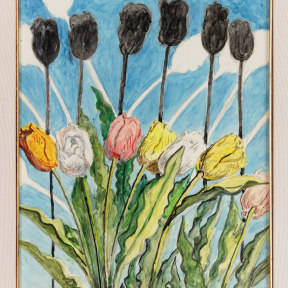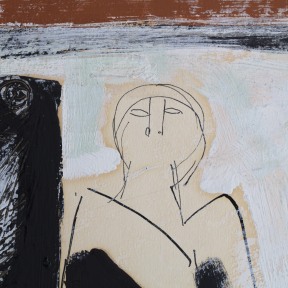-
Biography
Massimo Campigli (Berlin, Germany 1895 - Saint-Tropez, France 1971)
Massimo Campigli (originally Max Ihlenfeldt) was born in Berlin to German parents. His mother, Anna Pauline Louisa Ihlenfeldt, took him to Italy and entrusted him to a family in Settignano. Anna Pauline then moved to Florence, posing as his aunt, revealing her real identity only once he was an adolescent.
In 1914, Massimo began to work at a very young age as an assistant to Renato Simoni at the Corriere della Sera. He joined the Futurist circle and volunteered for the army, acquiring Italian citizenship, changing his surname to Campigli and registering Florence as his place of birth. During the war, he moved from Piedmont to Trieste, where he became a prisoner of the Austrians before escaping, fleeing to Romania. In 1919, he returned to Milan and was sent by the Corriere to Paris as a correspondent; he began to paint there, mostly self-instructed. He exhibited alongside De Chirico, Savinio and De Pisis.
In 1928, after visiting the Venice Biennale and the Etruscan Museum in Villa Giulia in Rome, he developed a taste for the complexity and refinement of ancient times. This new vision meant that his artworks seemed to emerge from distant and remote times, for the light backgrounds, the delicate colours and radical stylization of the figures.
His first solo exhibition was at the Stedelijk Museum in Amsterdam in 1946. Two years later, he took part in the Venice Biennale again, where he exhibited again in 1958, 1960 and 1962. He made extensive wall decorations in Geneva in 1937, at the League of Nations and in Padua, around 1939-40, at the University.
In 1947, he created a floor mosaic for the Metropolitan Cinema in Rome.
He was also active in the field of graphics, illustrating many books, including Marco Polo’s Il Milione in 1942 and André Gide’s Thesée in 1948. From 1949, he lived between Paris, Milan, Rome and St. Tropez.
In 1955, he held an exhibition at the Gemeentemuseum in The Hague and at the Kunsthalle in Bern (that same year he published his autobiography entitled Scruples) while, in 1967, he exhibited at the Palazzo Reale in Milan.
Campigli died in Saint-Tropez in 1971, in a house designed by him.
Copyright the artist. Photo UniCredit Group (Sebastiano Pellion di Persano)
-
Works
Max Ihlenfeld, known as Massimo Campigli: Italian, 1895-1971
A self-taught Italian painter, Massimo Campigli forged a unique path in Italian art of the twentieth century, inspired by archaeological motifs as archetypes of a vision rooted in childhood memories.Join our mailing list
* denotes required fields
In order to respond to your enquiry, we will process the personal data you have supplied in accordance with our privacy policy.







